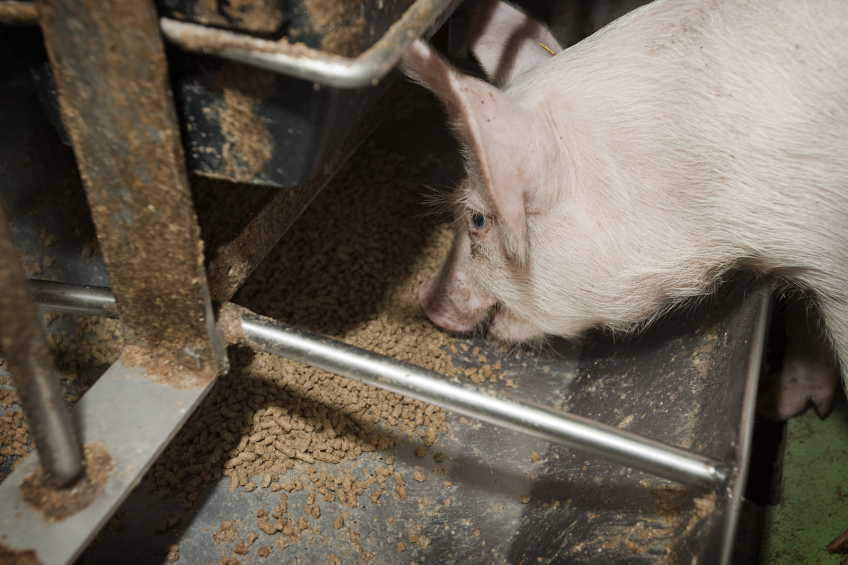Pigs fed DDGS gain same weight as with basal diet

Distillers dried grains with solubles, or DDGS, are increasingly common in swine diets in the United States. A study by the University of Illinois shows that pigs fed DDGS-CV, HP-DDG, or DDGS-BPX had no differences in average daily gain, average daily feed intake, and gain to feed ratio compared with pigs fed the basal diet. This was true for both growing and finishing pigs.
“Ethanol plants use different procedures to produce DDGS, which results in different end products,” said Hans H. Stein, a professor of animal sciences at University of Illinois. “To produce conventional DDGS, the corn is cooked to gelatinize starch prior to fermentation. However, uncooked DDGS can also be used if specific enzymes are used to pre-digest the starch prior to fermentation. Some ethanol plants also use a different fractionation technology to produce DDGS with more protein than conventional DDGS.”
DDGS compared with corn-soybean meal basal diet
Stein’s team tested diets containing 30 percent conventional DDGS (DDGS-CV), high-protein distillers dried grains (HP-DDG), or uncooked DDGS (DDGS-BPX), and compared them with a corn-soybean meal basal diet. They conducted one experiment using growing pigs and another experiment using finishing pigs to determine if the stage of growth of pigs affected their utilization of the different ingredients. Results indicated that pigs fed DDGS-CV, HP-DDG, or DDGS-BPX had no differences in average daily gain, average daily feed intake, and gain to feed ratio compared with pigs fed the basal diet. This was true for both growing and finishing pigs.
No difference in retention of energy, protein, or lipids
With a few exceptions, there was no difference in retention of energy, protein, or lipids between pigs fed the test ingredients. Growing pigs fed the basal diet retained more protein than pigs fed DDGS-CV or HP-DDG. Finishing pigs fed DDGS-BPX had greater lipid gain than pigs fed DDGS-CV. Net energy in DDGS-CV was greater than in HP-DDG or DDGS-BPX if fed to finishing pigs, but that was not the case if fed to growing pigs.
Uncooked DDGS can be included at up to 30 percent in growing and finishing pig diets
“Results from this study indicate that whereas there are some differences in retention of energy and nutrients among the different sources of DDGS, these differences are not of such a magnitude that they affect growth performance,” said Stein. “Conventional, high-protein, or uncooked DDGS can be included at up to 30 percent in growing and finishing pig diets without a negative effect on performance.”
The study, “Effects of co-products from the corn-ethanol industry on body composition, retention of protein, lipids and energy, and on the net energy of diets fed to growing or finishing pigs,” was published in a recent edition of the Journal of the Science of Food and Agriculture. It was co-authored by Nestor Gutierrez, Dong Yong Kil, Yanhong Liu, and James Pettigrew.











